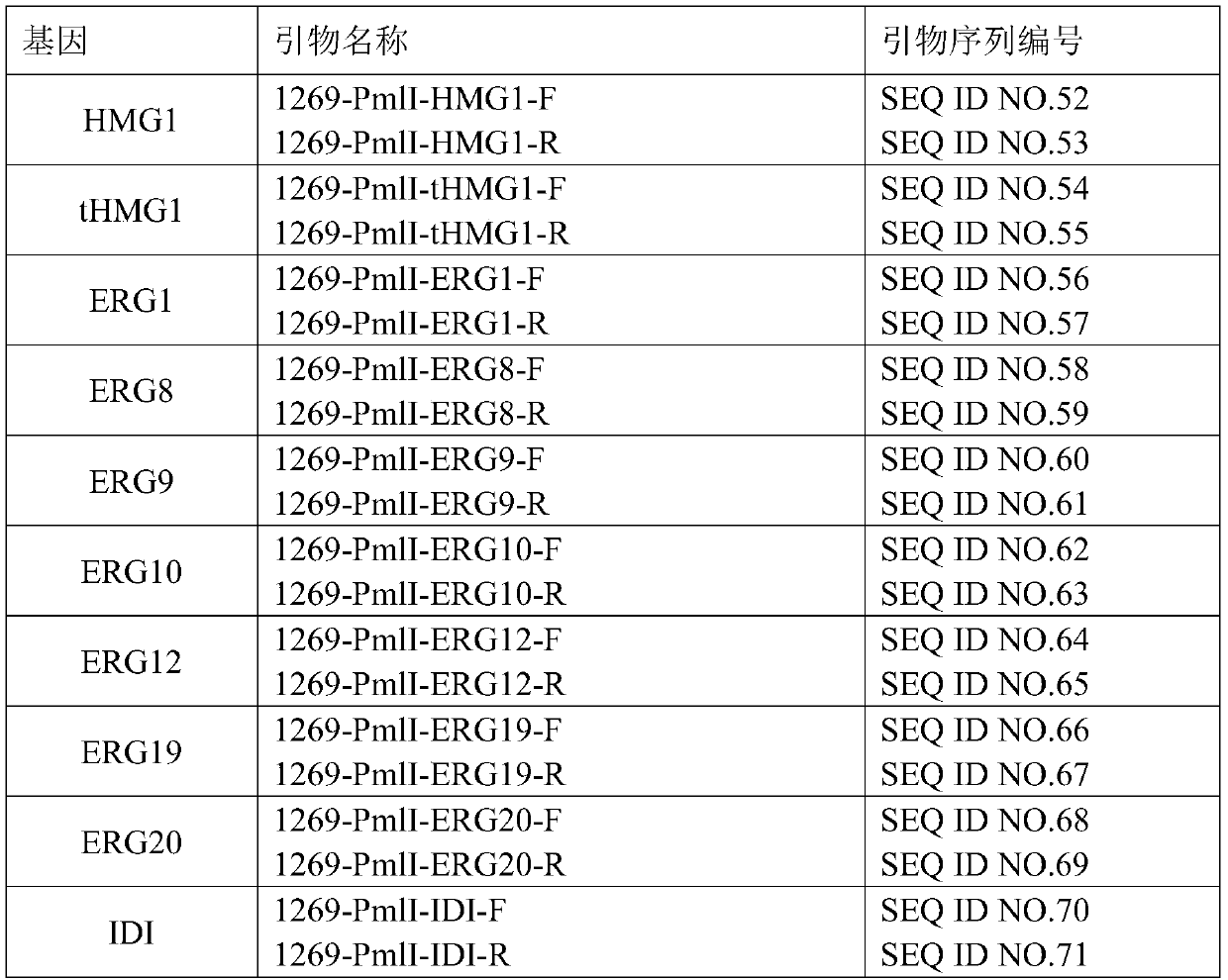Recombinant Yarrowia lipolytica for producing dammarendiol and protopanoxadiol and application
A technology for producing dammarediol and Yarrowia lipolytica, applied in the biological field, can solve the problems of high cost of separation and purification, complex composition of ginseng extract, pollution and the like
- Summary
- Abstract
- Description
- Claims
- Application Information
AI Technical Summary
Problems solved by technology
Method used
Image
Examples
Embodiment 1
[0056] Example 1, Construction of Yarrowia lipolytica Recombinant Bacteria 1
[0057] Introduce the optimized dammarenediol synthase encoding gene DS expression cassette into Yarrowia lipolytica (Yarrowia lipolytica) ATCC 201249 to obtain recombinant Yarrowia lipolytica 1 (abbreviated as recombinant bacterium 1). The nucleotide sequence of the gene DS encoding the mesenediol synthase is shown in SEQ ID NO.1.
[0058] 1. Module construction
[0059] The gene encoding dammarenediol-II synthase (dammarenediol-II synthase, DS, GenBank: AB265170.1) is derived from the plant ginseng (Panaxginseng). Yarrowia lipolytica was codon-optimized to obtain the optimized dammarenediol synthase coding gene DS (SEQ ID NO.1); the following DSs are codon-optimized.
[0060] Promoter TEF1 (SEQ ID NO.14), terminator XPR2 (SEQ ID NO.17), rDNA-up (SEQ ID NO.22), rDNA-down (SEQ ID NO.23) are all from Yarrowia lipolytica ATCC 201249 genome, the screening marker gene URA3 (SEQ ID NO.20) sequence come...
Embodiment 2
[0071] Example 2, Construction of recombinant Yarrowia lipolytica (abbreviated as recombinant bacteria 2) producing dammarenediol and protopanaxadiol
[0072]Introduce the optimized dammarenediol synthase encoding gene DS expression cassette, the optimized protopanaxadiol synthase encoding gene PPDS expression cassette and the optimized cytochrome-NADPH-reductase 1 encoding gene into Yarrowia lipolytica The expression cassette is obtained from recombinant Yarrowia lipolytica 2, the nucleotide sequence of the optimized dammarenediol synthase coding gene DS is shown in SEQ ID NO.1, and the optimized protopanaxadiol synthase The nucleotide sequence of the coding gene PPDS is shown in SEQ ID NO.2, and the nucleotide sequence of the optimized cytochrome-NADPH-reductase 1 coding gene is shown in SEQ ID NO.3.
[0073] The gene encoding dammarenediol-II synthase (dammarenediol-II synthase, DS, GenBank: AB265170.1) is derived from the plant ginseng (Panaxginseng). codon optimization o...
Embodiment 3
[0098] Example 3, gene element cloning and construction of plasmids containing corresponding gene elements
[0099] 1. PCR amplification of genetic elements
[0100] Using the Yarrowia lipolytica ATCC201249 genome as a template, HMG1, tHMG1, ERG1, ERG8, ERG9, ERG10, ERG12, ERG19, ERG20 and IDI were amplified with the primers in Table 1, respectively. The gene fragments obtained after amplification were purified and recovered for future use.
[0101] Table 1 PCR amplification gene primer list
[0102]
[0103] The PCR enzyme used in the present invention is from Nanjing Nuoweizan Biotechnology Co., Ltd. Max Super-Fidelity polymerase. The 50 μL PCR amplification system is as follows: DNA template, 1 μL; 2 μL each of the front primer (10 μM) and the back primer (10 μM); dNTP (10 mM), 1 μL; 2×Phanta Max Buffer, 25 μL; Max Super-Fidelity polymerase, 1 μL; finally make up 50 μL with double distilled water. Set up the amplification program on the PCR instrument. Amplificat...
PUM
 Login to View More
Login to View More Abstract
Description
Claims
Application Information
 Login to View More
Login to View More - R&D
- Intellectual Property
- Life Sciences
- Materials
- Tech Scout
- Unparalleled Data Quality
- Higher Quality Content
- 60% Fewer Hallucinations
Browse by: Latest US Patents, China's latest patents, Technical Efficacy Thesaurus, Application Domain, Technology Topic, Popular Technical Reports.
© 2025 PatSnap. All rights reserved.Legal|Privacy policy|Modern Slavery Act Transparency Statement|Sitemap|About US| Contact US: help@patsnap.com


